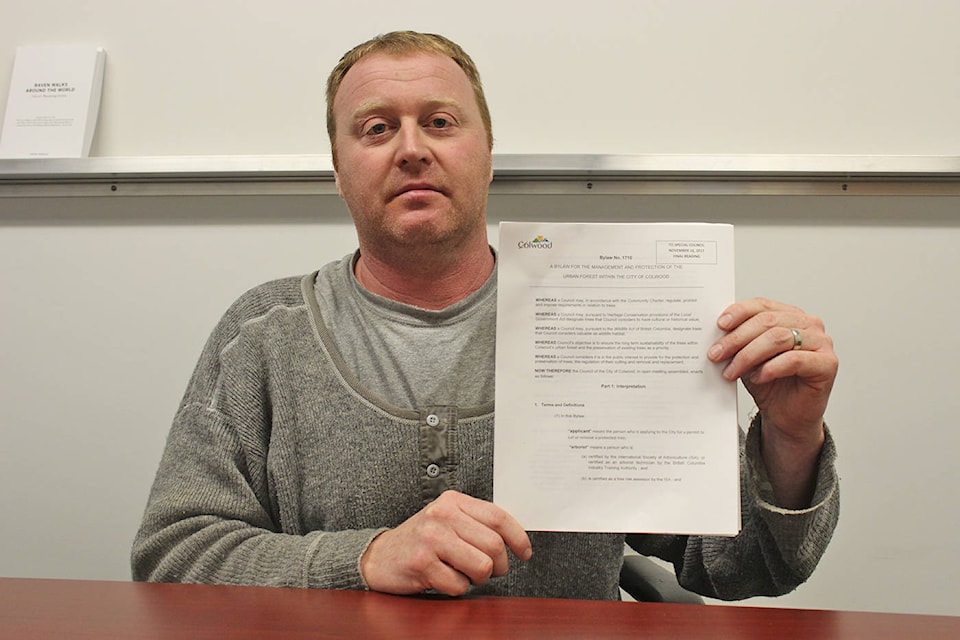A local arborist is sounding the alarm over the City of Colwood’s new tree bylaw saying it’s unreasonable and puts homeowners at risk.
Tim Winship is the owner and operator of Custom Falling Tree Service, a Langford-based service that does everything from fruit tree pruning to large tree or hazard removals for residents throughout Greater Victoria.
Recently, a number of Winship’s clients, who have hazardous trees on their property, have been told by the City that in order to remove the tree, they must pay a $4,000 retainer and plant eight more trees, in accordance with its new urban forest bylaw.
“No one has that kind of money to do that. It’s astronomical,” said Winship, who has been in the forestry industry for more than 20 years and is a certified arborist. “They’ve implemented this bylaw and didn’t really think about the consequences after it.”
RELATED: Colwood moves to protect trees from unnecessary removal
In November, the City approved a new interim urban forest bylaw in an attempt to protect trees from unnecessary removal and preserve its urban forest. Through the bylaw, a permit is required to remove any protected tree on private or public property and replacement trees must be planted.
Trees protected under the bylaw include those with a diameter of 20 centimetres or greater when measured at chest height, trees with more than one stem at 1.4 metres above grade, trees with evidence of nesting birds, trees that form a hedge that is greater than five metres high and trees on all City-owned land including boulevards, streets, parks and open spaces.
Prior to the new bylaw being implemented, Winship said if a tree was hazardous – meaning it was rotting or had the potential to fall down on a home or person – he would write an exemption, and the resident would go to the City for a permit to take it down.
But now, the expensive process means some homeowners can’t afford to take them down, even if they pose a danger to their home and safety, Winship said.
“They were thinking about the protection of trees, but in the long run, you have to protect the homeowners first and people, that’s the bottom line,” he said, noting he would like the City to revamp the bylaw now and would like to see something similar to what the City of Victoria has implemented.
#Colwood's Urban Forest Task Force to review the interim bylaw had their first meeting last night. Attend upcoming meetings on Wednesdays Jan 17, 24 and 31 at 7pm at City Hall to learn more and share your thoughts! https://t.co/H3j4KOGz1g pic.twitter.com/zCzC5i1z9M
— City of Colwood (@cityofcolwood) January 12, 2018
However, Mayor Carol Hamilton emphasized changes can still be made to the bylaw and a task force has been complied of professionals and local residents to review it. An amended bylaw is expected to come to council for approval in April. In the meantime, residents are encouraged to share their opinion on it thus far.
“We put the bylaw in place and did it admittedly rather heavy-handedly to ensure that people didn’t go out and start their chainsaws immediately, dealing with issues on their own terms,” she said, adding a number of councils have been trying to address urban forests for a number of years.
“This was deemed the best way to at least ensure that nothing happened while we took the time to review the bylaw and check each aspect of it off to ensure we weren’t placing burdens [on residents] … Certainly there wasn’t intention to create duress.”
